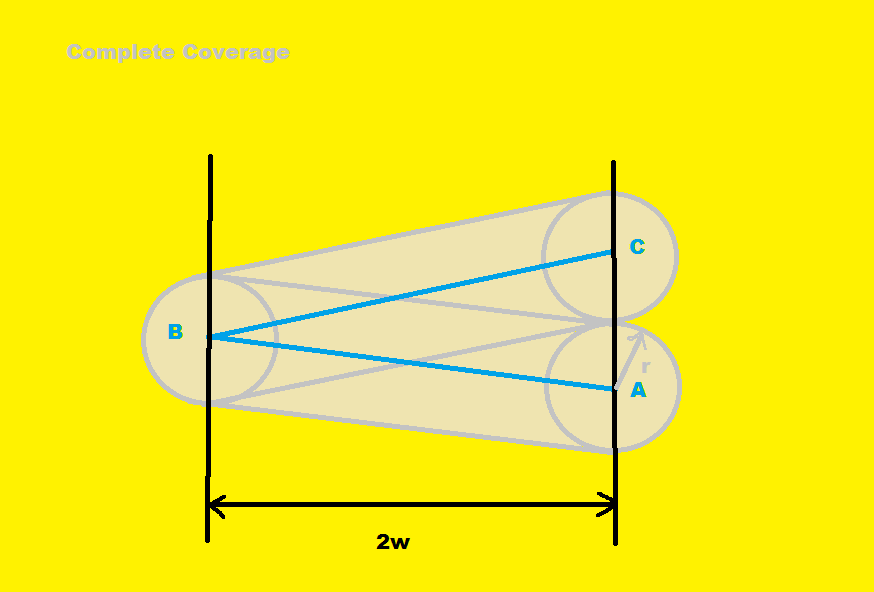 08-16-15, 09:35 PM
08-16-15, 09:35 PM
|
#7
|
Silent Hunter 
Join Date: Sep 2010
Posts: 3,975
Downloads: 153
Uploads: 11
|

Ok, I haven't read all the comments and criticisms yet. I want to finish the problem and add a little math first. I'll try to get back to the comments, as time permits.
I've computed some figures for typical (and maybe not so typical ship/sub speeds.
table1.txt
The 3 knot speed is typical of economical searched cruising, 6 kn. is good for a S-boat, 9 is economical for a fleetboat, and faster speeds to see how more intensive searches might fare.
You might ask, could we go faster and eliminate the gaps between segments? The answer is yes; if our sub goes fast enough, we could theoretically, detect every ship making a transit through this search zone (for our assumed conditions).
To show how fast we would have to go, it helps to reconfigure the diagram. Below, we see the segments of our search are much closer together (like a coilbound spring); so much so that there are no spaces uncovered between the segments. I didn't shade the overlaps, but you can easily see that there would be a large 'wedge area' or amount of overlap here.

To achieve this level of coverage, our sub must go across the zone to the west and back again, so the detection circles at A and C are tangent. Mathematically, this means the sub must move the length of 4w in 't' hours, while the target ship moves 2r in 't' hours:
Vu = 4w / t
Vt = 2r / t
From here, all we need to do is solve the second equation for t and substitute the result in the first equation. Doing this, we obtain:Vu = Vt * (4w / 2r)
Putting in the numbers we used for our earlier example, we find that we would need to have a speed of 4 times the target's speed, or 32 knots!
These results helps explain why sub operations in WWII didn't sink enemy ships at a blinding pace, and individual subs might spend days, or even weeks, between ship sightings.
It also shows why aircraft were such useful sub hunters. They had an enormous speed advantage over any submarine.
Last edited by TorpX; 08-17-15 at 01:33 AM.
Reason: Added brief explanation for table
|

|

|